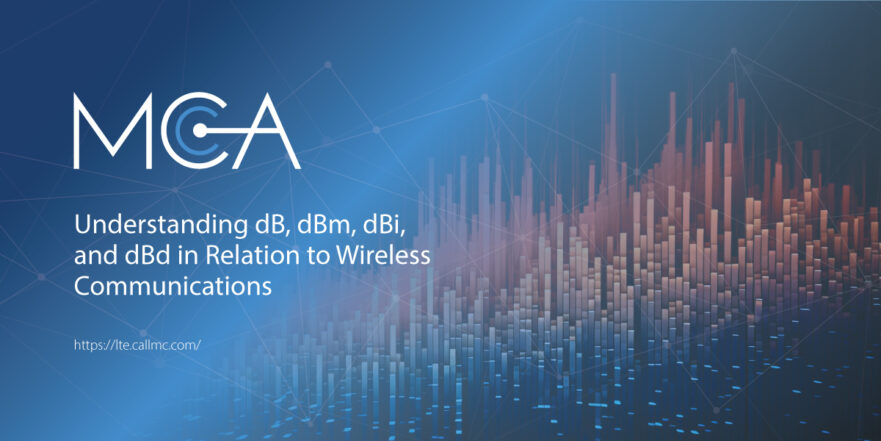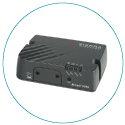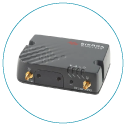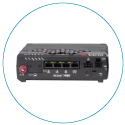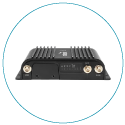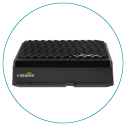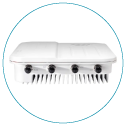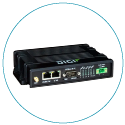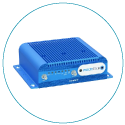The Role of dB, dBm, dBi, and dBd in Wireless Communications
In wireless communication and radio frequency (RF) engineering, understanding units like dB, dBm, dBi, and dBd is crucial to help engineers and technicians quantify signal strength, power levels, and antenna performance.
dB, dBm, dBi, and dBd play crucial roles in RF communications networks due to their significance in understanding and optimizing RF network performance.
RF communications networks are used for various purposes where wireline communications are inappropriate.
The following are some examples of RF communications technologies that are critical to extending network connectivity:
LoRaWAN
Wi-Fi
Cellular (4G/5G)
Bluetooth
Outlining Why These Are Important Aspects of Various Communications Technologies
dB (Decibel)
- dB is a unit of measurement that can be used to describe the power of an RF signal.
- dB can be used to reference a positive or negative change in the power of RF signals based on different items that can impact the signal, such as the transmit power or an RF radiator, the gain of an antenna, the loss of RF cables, and signal attenuation over distance.
dBm (Decibel per Milliwatt)
- dBm is an RF property that describes the power of an RF signal relative to one milliwatt.
- dBm is most specifically used to describe the power generated by an RF transmitter or radiator, or to describe the total radiated RF power based on all factors that can impact the RF signal.
- Every 3 dBm increase indicates a doubling of the RF power. Every 3 dBm decrease indicates a reduction of RF power by half.
- Every 10 dBm increase indicates a multiplier of RF power by 10 times (10x). Every 10 dBm decrease indicates a reduction of RF power by one-tenth (x/10).
dBi (Decibel Relative to Isotropic)
- dBi refers to a measure of the focusing power of an antenna, commonly referred to as “antenna gain.”
- dBi is used to express the gain of antennas relative to an isotropic radiator. In RF communications, understanding antenna gain is critical to properly selecting antennas to address the RF coverage or connectivity of a proposed RF system design.
- Antenna selection and placement are critical factors in RF communications, and the dBi values inform the integrator of the range of the antennas being considered for an RF design.
- Antennas with higher dBi values can transmit signals over longer distances, penetrate obstacles more effectively, and enhance the overall performance of RF networks.
dBd (Decibel Relative to Dipole)
- dBd measures the gain of antennas relative to a reference dipole antenna. dBd is sometimes used in place of dBi, as they both refer to the antenna gain. dBi is more commonly used because it refers to a single point in space, making calculations much easier to understand.
Understanding dB (Decibel)
The decibel is a logarithmic unit that expresses the ratio between two physical quantities, typically power, voltage, or current. Unlike linear scales, which represent values in a straightforward manner, decibels offer a logarithmic scale, providing a more practical and meaningful representation of the magnitude of a signal.
Decibels serve as a cornerstone in signal analysis, offering a versatile and intuitive way to quantify and compare power levels across various domains of technology and communication. By understanding the power of decibels, engineers can navigate the intricate landscapes of telecommunications and electronics with precision and clarity.
The formula to calculate power ratio (N) in decibels is: N = 10 log10 (Pout/Pin) dB
- A power ratio greater than 0 dB indicates gain.
- A power ratio less than 0 dB indicates loss.
- A power ratio of 0 dB signifies no gain or loss.
Why Logarithmic Scale?
The logarithmic nature of decibels offers several advantages in signal analysis:
- Wide Range Representation: Decibels can represent an extensive range of values, from the faintest whispers to the thunderous roars, in a compact and manageable scale.
- Human Perception: Our perception of sound and signal strength is logarithmic in nature. Decibels align more closely with our subjective sense of loudness and intensity.
- Multiplicative Nature: Decibels simplify complex multiplication and division operations into straightforward addition and subtraction, facilitating calculations and comparisons.
Practical Applications
- Signal Strength: Decibels are widely used in telecommunications to quantify the strength of signals transmitted and received by antennas, amplifiers, and receivers.
- Audio Engineering: In audio systems, decibels help measure the amplitude of sound waves, assess signal-to-noise ratios, and regulate volume levels.
- Wireless Networks: Decibels play a crucial role in evaluating the performance of wireless networks, optimizing coverage areas, and mitigating interference.
- Electronics and RF Engineering: Engineers use decibels to characterize the gain and attenuation of electronic components, cables, and transmission lines.
Key Considerations
- Gain and Loss: A positive decibel value indicates gain, while a negative value signifies loss or attenuation.
- Relative Measurements: Decibels provide relative measurements, enabling comparisons between different power levels and signal strengths.
- Logarithmic Representation: Decibels offer a logarithmic scale, making them ideal for representing a wide range of values in a compact format.
Understanding dBm (Decibel per Milliwatt)
Decibel per Milliwatt (dBm) is a unit used to measure power levels relative to 1 milliwatt (mW). It provides an absolute measurement of power. Unlike decibels (dB), representing the ratio between two power levels, dBm provides an absolute power measurement. This makes dBm particularly useful in quantifying the strength of signals transmitted and received by various electronic devices and components.
dBm is a fundamental telecommunications, RF engineering, and network analysis measurement unit. Its ability to provide absolute measurements of power levels makes it indispensable in designing, optimizing, and troubleshooting modern communication systems.
The formula to convert power ratio (N) to dBm is: N = 10 log10(Pout / 1) dBm
Using the rule of 10s and 3s, dBm values can be quickly converted to absolute power values.
Practical Applications
- Antenna Design and Evaluation: dBi plays a crucial role in antenna design and evaluation, allowing engineers to assess antennas' directional performance and gain across different frequency bands and applications.
- Antenna Comparison: dBi is a valuable metric for comparing the performance of different antenna designs and configurations. Engineers use dBi measurements to assess antennas' directional characteristics and gain across various frequency bands and applications.
- Wireless Networks: dBi serves as a key metric for optimizing coverage areas, mitigating interference, and improving overall network performance. Antennas with higher dBi values can transmit signals over longer distances and penetrate obstacles more effectively.
- Satellite Communication: In satellite communication systems, dBi is used to quantify the gain of satellite antennas and ground stations. By maximizing antenna gain in the direction of communication, satellite links can achieve higher data rates and greater reliability.
- Radio Propagation Studies: dBi is also instrumental in radio propagation studies, allowing researchers to model signal propagation in various environments and predict coverage areas based on antenna gain patterns.
- Broadcasting and Reception: dBi helps optimize antenna selection and placement to maximize signal coverage and minimize interference in broadcasting and reception systems. Antennas with higher dBi values can transmit and receive signals over longer distances with greater clarity and reliability.
Key Considerations
- Reference Point: The reference point for dBm is 1 milliwatt, making it an absolute power measurement. Positive dBm values indicate power levels above 1 mW, while negative dBm values represent power levels below 1 mW.
- Logarithmic Scale: Similar to decibels, dBm uses a logarithmic scale, offering a compact and intuitive representation of power levels across a wide range of values.
Understanding dBi (Decibel Relative to Isotropic)
Decibel Relative to Isotropic (dBi) provides insights into antenna performance and signal propagation. dBi is a measurement unit that expresses an antenna's gain relative to an isotropic radiator. An isotropic antenna is a theoretical antenna that radiates power uniformly in all directions, making it an ideal reference point for comparing antenna performance.
Isotropic radiators are the antenna comparison baseline due to their uniform theoretical radiation pattern. An isotropic antenna has a gain of 0 dBi, signifying that it neither amplifies nor attenuates the transmitted signal. As such, any gain expressed in dBi indicates the degree to which an antenna enhances signal transmission compared to an isotropic radiator.
The calculation of dBi involves comparing the radiation pattern of a real-world antenna to that of an isotropic antenna. The antenna's gain in dBi is determined by measuring its directional performance and comparing it to the idealized isotropic radiator.
Practical Applications
- Wireless Networks: In the realm of wireless communication, dBm serves as a crucial metric for assessing signal strength, coverage areas, and network performance. It helps engineers optimize antenna placement, mitigate interference, and enhance overall network reliability.
- RF Engineering: In radio frequency (RF) engineering, dBm is used to characterize the output power of transmitters, amplifiers, and antennas. It enables engineers to design and optimize RF systems for various applications, including satellite communication, cellular networks, and radar systems.
- Network Testing: dBm is commonly used in network testing and troubleshooting to identify signal attenuation, signal-to-noise ratios, and transmission losses. Technicians can diagnose issues and optimize system performance by measuring dBm levels at different points in a network.
Key Considerations
- Directional Performance: Antennas with higher dBi values exhibit greater directional performance, focusing signal strength in specific directions while minimizing signal loss in other directions.
- Logarithmic Scale: Similar to other decibel-based measurements, dBi uses a logarithmic scale, enabling a concise representation of antenna gain across a wide range of values.
- Gain Patterns: Antennas with higher dBd values exhibit stronger gain in specific directions, allowing for more focused signal transmission and reception. Understanding the gain patterns of antennas is essential for optimizing coverage and minimizing signal loss.
- Comparative Analysis: dBd measurements provide a standardized method for comparing the performance of antennas across different models and manufacturers. Engineers and enthusiasts can use dBd values to make informed decisions when selecting antennas for specific applications.
Understanding dBd (Decibel Relative to Dipole)
Decibel Relative to Dipole (dBd) measures the gain of an antenna concerning a reference dipole antenna. A reference dipole antenna provides a fixed 2.15 dB of gain over an isotropic antenna. Dipole antennas, consisting of two conductive elements, are fundamental elements in RF engineering. The reference dipole antenna used in dBd measurements is theoretical, assuming ideal conditions with no surrounding objects affecting its radiation pattern. It is no longer a preferred method of measure, with dBi being used much more frequently in practical applications.
The relationship between dBi and dBd is expressed as dBi = dBd + 2.15 dB
Applying the Concepts
It is important to understand how the concepts of dB, dBm, dBi, and dBd are applied in designing RF networks. As stated above, dBm is typically used in reference to the power of an RF signal. When designing RF networks, dBm is used to reference the transmit output power of a radio transmitter. Different classes of devices have different maximum transmit output power capabilities that are dictated by the device purpose, then environment in which it will be installed, and the regulations of governing bodies, such as the FCC.
Also, dBi is used to understand the gain of an antenna, or how much an antenna focuses the power of a radio transmitter. When the transmit output power of a radio transmitter is coupled with the gain of an attached antenna, the dBm and dBi are added together, resulting in what is called the “Effective Isotropic Radiated Power”, or EIRP for short. This value represents the total power budget of the RF system, and is measured in dBm.
As an example, if an indoor Wi-Fi Access Point (WAP), has a transmit output power of 23 dBm, and has a 6 dBi gain antenna attached to it, the EIRP will be 29 dBm. This will provide a range of roughly 1800 ft in free space with no obstructions. If either the transmit output power or the antenna gain are increased, the range of the RF system will also increase. For instance, if the antenna gain is increased from 6 dBi to 9 dBi, the resulting unobstructed range in free space would be 2500 ft.
About the Editor

About MCA and Our CNS Team
MCA is one of the largest and most trusted integrators in the United States (as well as one of Motorola Solutions largest North American platinum channel partners), offering world-class voice, data, and security solutions that enhance the quality, safety, and productivity of customers, operations, and lives. More than 65,000 customers trust MCA to provide carefully researched solutions for a safe, secure, and more efficient workplace.
Our Cellular Networking Solutions (CNS) team (formerly known as USAT) is made up of certified experts in designing and deploying fixed and mobile wireless data connectivity solutions for public and private enterprises nationwide - complete with implementation, training, proof of concept (POC), system auditing, and on-site RF surveying services with optional engineering maintenance contracts.
Our extensive Semtech catalog of world-class routers, gateways, and software designed for remote monitoring and management in even the harshest environments allows us to deliver a full suite of reliable technologies capped with a service-first approach.
Share this Post
